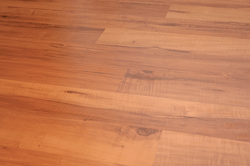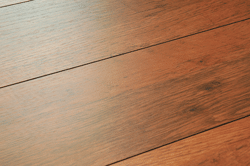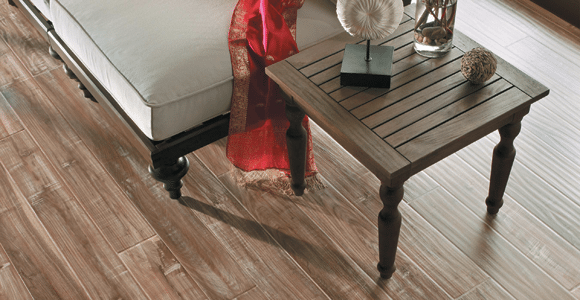There’s a lot to be gained through home improvement such as increased functionality, new appliances, efficient systems, updated decor and additional living space. Following expert advice helps you realize the pure enjoyment of making a home really “your own.”
One of the toughest, most appealing, functional and simple-to-install floors just happens to be one of the least costly. Laminate flooring has come a long way since its invention in the 1970s and deserves serious consideration by anyone contemplating a new floor, particularly during tough economic times.

Laminate flooring doesn’t enjoy the media attention of bamboo, wood, stone or tile. Ironically, homeowners can find laminate flooring products to match the look of every variant of each of these products. Further, laminate flooring’s composition of a high-resolution image bonded to a composite core that is sealed under a clear, resin-based wear layer lets it match the look of any surface. Natural designs from hardwood, bamboo, granite and marble as well as tile and carpet are all available in laminate.
Along with its impressive looks, laminate’s popularity has skyrocketed because of price and performance.
Compared to wood, laminate’s toughness shines. Its resistance to scratches and dents and capacity to stand up to daily wear exceed the performance of wood products. Small children and pets have proven laminate’s record. The first layer of laminate flooring is an abrasion-resistant finish of aluminum oxide. The only material that is harder is diamond. Laminate does not require waxing, oiling or staining but should be kept clean — dust, dirt and sand particles can scratch the surface.
Laminate flooring’s chief vulnerability is high moisture that can harm the composite core. If you’re planning on it for a kitchen or bath, make sure your laminate is approved for high-moisture areas. These laminates are designed to minimize the risk of moisture damage. Laminate provides better stain resistance compared with hardwood and bamboo because the first layer is stain-resistant. It is very difficult for stains to penetrate that first layer.
Another plus is easy maintenance; all you need is cleaner and a rag. But toughness alone might sell a homeowner on laminate, since you can even remove a broken plank and replace it in case of damage.
Ease of installation is just as convincing, making laminate the flooring of choice for a do-it-yourselfer. Laminate is known as a “floating floor system.” Think of each plank of wood being nailed to the sub-floor, one after the other. By comparison, laminate rests on top of an existing floor. There is no nailing, screwing or gluing. With click-together laminate, you don’t glue planks together. Installing the floor is as simple as laying down underlayment, cutting planks to the right lengths and snapping them together.

Perhaps the biggest attraction of laminate, however, is price. For those feeling the crunch, economy lines are sold for less than $1 per square foot. For a little more, high-end laminates offer a tougher, more appealing look. In a down economy, every last cent makes a difference, so installing laminate is a low-cost solution to a high-cost project.
Gone are the days when laminates were easy to spot. Manufacturers today create strikingly realistic visuals and textures that often cannot be distinguished from the real thing.
Laminates are ideal for homeowners who desire the attractiveness of wood, stone or other costly coverings but not the upkeep. Laminate’s tough surface and low maintenance make it perfect for an active home in a down economy.
Source: World Floor Covering Association



